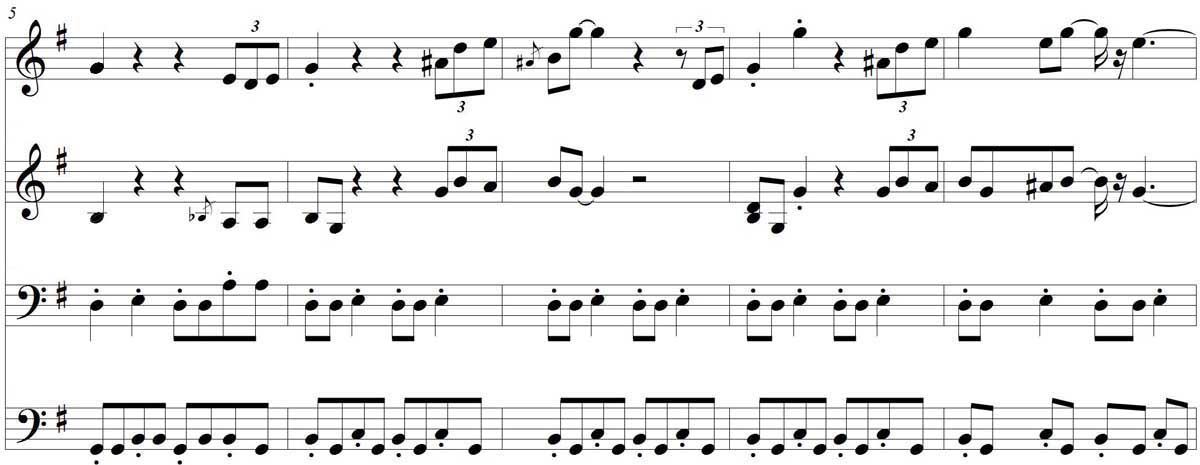Doug Suggs was a St. Louis pianist who relocated to Chicago for a portion of his career. He made his only recordings later in life, although prior to that Albert Ammons recorded a rendition of Suggs’s Sweet Patootie for the Library of Congress in 1938. Suggs was able to make his own recording of Sweet Patootie later in 1957 along with a few other pieces. Suggs played in a more understated manner than Ammons, in line with the St. Louis barrelhouse style.
Another one of Suggs’s recordings, Doug’s Jump, appears to have some Chicago influence in the accompaniment pattern. Here the standing bass features a chromatic descending figure first used by George W. and Hersal Thomas in The Fives.


This figure was used by Chicago pianists including Hersal Thomas (Devil Dance Blues), Jimmy Yancey (The Rocks), and Meade ‘Lux’ Lewis (Randini’s Boogie).
Doug’s Jump gives the impression, at first, of being one of the simpler examples of barrelhouse, but careful analysis suggests otherwise. A remarkable feature of Doug’s Jump is the two-part counterpoint in the right hand whereas many barrelhouse pieces rely mostly on parallel or oblique motion. The left hand can be divided into two layers also, resulting in a four-part counterpoint, sometimes featuring polyrhythm. This exploded view shows the individual qualities of each voice:

Another piece by Suggs that shows the cross-fertilization between St. Louis and Chicago is Smoke Like Lightning. It seems to be cut from the same cloth as Jimmy Yancey’s Jimmy Rocks. Both recordings feature a plodding accompaniment, often in double notes and with a non-swung rhythm. Since it is a less-usual style of playing for Yancey perhaps he was influenced by Suggs in this case.


A point that demonstrates Smoke Like Lightning’s St. Louis connection is that it shares some features with Henry Brown Blues. Compare measure 6 in both pieces as well as the cadences in measure 12.


That cadence from Smoke Like Lightning also looks similar to those in some of Albert Ammons’s pieces such as Shout for Joy and Boogie Woogie Blues. Since Ammons learned Sweet Patootie from Suggs perhaps he learned this cadence from him as well. Compare the right hand of measure 12 in Suggs to measure 72 in Ammons:

Like Albert Ammons, Jimmy Yancey also recorded Suggs’s Sweet Patootie and uses a similar cadence to the above example in his Yancey Stomp.

There appears to be another Chicago connection at the end of Smoke Like Lightning when it ends in A-flat major after playing the entire piece in C major up to that point.

This is a practice similar to that of Jimmy Yancey whose Yancey Stomp is in C major but abruptly cadences in E-flat major at the end, to name just one example. Since this type of abrupt modulation was also used earlier by Jimmy Blythe we can presume that the practice originated in Chicago. Like Yancey Stomp, Blythe’s Sugar Dew Blues is in C major but cadences on E flat at the end, while his My Girl is in E major but unexpectedly goes to D major in the final bars. But there is another St. Louis barrelhouse pianist, ‘Barrelhouse’ Buck McFarland, who sometimes ended his pieces on a false note, so the matter is not entirely clear.

The only known four recordings by Doug Suggs can be found on Primitive Piano from The Sirens Records.